Ginger Tea: A Natural Remedy for Period Bloating – An Indian Youth’s Guide
Menstrual cycles can be challenging, with cramps, mood swings, and the infamous bloating making it hard to function at your best.
If you’re an Indian youth juggling studies, work, and social commitments, the added discomfort of period bloating can feel like an unwelcome guest. But what if the solution lies in your kitchen?
According to age-old wisdom—something our mothers have always known—ginger tea is a simple, effective remedy for easing period bloating.
This blog delves into why ginger tea is a go-to solution for menstrual bloating and how it aligns with the lifestyle of Indian youth. Let’s explore how this golden elixir can make your period days a little easier.
Understanding Period Bloating
Period bloating occurs due to hormonal fluctuations, particularly increased levels of estrogen and progesterone. These hormones cause water retention, which leads to a feeling of puffiness or tightness, especially around the abdomen.
While bloating is a normal part of the menstrual cycle, it can be uncomfortable and frustrating.
Why Do Indian Youth Face More Challenges?
As a young Indian, you may already have a hectic lifestyle, balancing academics, work, or other responsibilities. Add to this the cultural expectations and dietary habits that sometimes lean heavily on processed foods, salt, or caffeine—all of which can exacerbate bloating.
Furthermore, in many Indian households, discussing menstruation with male family members is still considered taboo. Some deeply ingrained cultural practices also restrict women during their menstrual cycle, such as not allowing them to enter the kitchen or sleep in a proper bed.
These emotionally distressing practices can, in turn, cause stress, leading to the release of cortisol, a stress hormone that worsens physical discomfort, including bloating.
This is where natural remedies like ginger tea can make a significant difference.
Why Ginger Tea Works Wonders for Period Bloating
1. Anti-inflammatory Properties
Ginger contains powerful anti-inflammatory compounds called gingerols and shogaols. These help reduce the inflammation in the gut, relieving bloating and soothing abdominal discomfort.
2. Promotes Digestive Health
Bloating often stems from digestive issues like slow metabolism or gas buildup. Ginger tea stimulates the digestive enzymes, aiding in faster digestion and reducing gas.
3. Diuretic Effect
Ginger tea has mild diuretic properties that help flush out excess water from the body, reducing water retention and puffiness.
4. Hormonal Balance
Ginger may also play a role in regulating hormones, helping reduce the severity of period symptoms, including bloating, cramps, and mood swings.
5. Warmth and Comfort
A hot cup of ginger tea provides warmth and relaxation, which can ease period discomfort and elevate your mood during challenging days.
Ginger Tea for Period Bloating: Step-by-Step Approach with External Resources
Here’s how you can implement ginger tea as a remedy for period bloating, broken down into actionable steps. Additionally, external links provide deeper insights and credibility.
Step 1: Understand the Science Behind Ginger and Menstrual Health
Before diving into remedies, it’s helpful to understand why ginger is effective for bloating and menstrual discomfort. Research confirms its anti-inflammatory, digestive, and hormone-regulating properties.
External Resources:
Step 2: Gather Ingredients
Head to your kitchen or a local grocery store to gather the following ingredients:
- Fresh ginger root
- Water
- Optional: honey, lemon, or additional spices like cardamom
External Resources:
- BBC Good Food: Why Fresh Ginger Is Better Than Powder
- Times of India: Ginger Benefits in Indian Cooking
Step 3: Prepare Ginger Tea
Follow this quick recipe:
- Boil 2 cups of water in a pan.
- Grate or thinly slice 1-2 inches of fresh ginger.
- Add the ginger to the boiling water and let it simmer for 5-7 minutes.
- Strain the tea into a cup.
- Add a teaspoon of honey or a squeeze of lemon for extra flavor.
External Resources:
Step 4: Drink Responsibly
Consume ginger tea once or twice a day during your menstrual cycle. Avoid drinking excessive amounts, as it can lead to acidity or heartburn in some individuals.
External Resources:
Step 5: Pair Ginger Tea with Lifestyle Adjustments
For maximum relief, complement ginger tea with:
- Hydration: Drink at least 2-3 liters of water daily.
- Diet: Include fiber-rich foods and avoid salty snacks.
- Light Exercise: Try yoga or gentle stretching exercises.
External Resources:
Step 6: Monitor the Results
Keep track of how ginger tea affects your period symptoms over a few cycles. If the bloating significantly reduces, incorporate it into your routine. However, if symptoms persist, consult a healthcare provider.
External Resources:
- WebMD: When to See a Doctor for Menstrual Symptoms
- National Library of Medicine: Gut Health and Hormonal Cycles
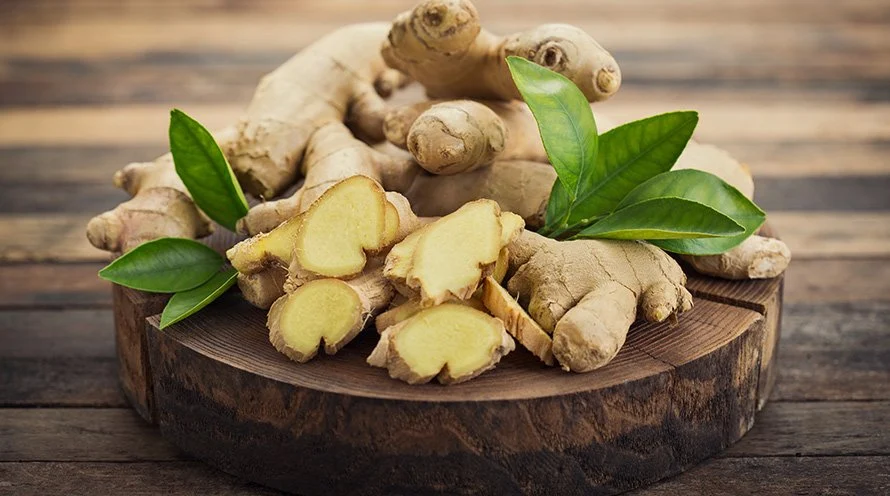
Quick Overview of the Steps to Use Ginger Tea for Period Bloating
- Understand the Science Behind Ginger
Ginger’s anti-inflammatory and digestive properties make it effective for easing period bloating. Its ability to regulate hormones also helps reduce discomfort during your menstrual cycle. - Gather the Ingredients
You’ll need fresh ginger root, water, and optional ingredients like honey, lemon, or cardamom for added flavor. - Prepare Ginger Tea
Boil 2 cups of water, add grated or sliced ginger, and let it simmer for 5-7 minutes. Strain into a cup and add honey or lemon if desired. - Drink Responsibly
Drink ginger tea once or twice a day during your period, but avoid overconsumption to prevent acidity or heartburn. - Pair with Lifestyle Adjustments
Stay hydrated, eat fiber-rich foods, and engage in light exercise like yoga to enhance the effectiveness of ginger tea in reducing bloating. - Monitor the Results
Track how your symptoms change over a few cycles. If bloating decreases, continue using ginger tea. If symptoms persist, consult a healthcare provider.
By following these simple steps, you can naturally manage period bloating and stay connected to time-tested, culturally rooted remedies.
When and How Often Should You Drink Ginger Tea?
For best results, drink ginger tea:
- 1-2 times a day during your menstrual cycle, especially when bloating is at its peak.
- First thing in the morning on an empty stomach or in the evening for a calming effect.
Avoid overconsumption, as too much ginger can sometimes cause heartburn or acidity.
The Cultural Connection: Wisdom Passed Down
In Indian households, natural remedies like ginger tea have been trusted for generations. Whether it’s curing a sore throat or soothing an upset stomach, ginger holds a revered place in Ayurvedic medicine. Our mothers and grandmothers often know the value of these age-old practices, even when modern science is just catching up.
As Indian youth, incorporating these traditional remedies into your lifestyle allows you to stay connected to your roots while addressing modern-day health challenges.
Why Ginger Tea Fits the Lifestyle of Indian Youth
- Quick and Easy to Prepare: With minimal ingredients and effort, ginger tea can be made in minutes, making it perfect for busy students or young professionals.
- Affordable and Accessible: Ginger is readily available in most Indian kitchens, making this remedy cost-effective and convenient.
- Customizable Flavor: You can experiment with add-ons like cardamom, cinnamon, or tulsi to suit your taste preferences.
- Holistic Wellness: Beyond bloating, ginger tea helps with cramps, nausea, and even stress—common challenges faced by Indian youth.
Additional Tips to Combat Period Bloating
While ginger tea is an excellent remedy, combining it with a healthy lifestyle can enhance its effects:
- Stay Hydrated: Drink plenty of water to prevent water retention.
- Reduce Salt Intake: Avoid salty snacks, which can worsen bloating.
- Eat Fiber-Rich Foods: Include fruits, vegetables, and whole grains in your diet to promote digestion.
- Exercise Gently: Yoga and light stretches can help alleviate bloating and cramps.
- Limit Caffeine: Replace coffee with herbal teas like ginger, chamomile, or peppermint during your period.
Conclusion: A Cup of Comfort
Ginger tea is more than just a beverage—it’s a cup of comfort, offering relief from period bloating and other menstrual woes. As an Indian youth navigating the complexities of modern life, embracing this traditional remedy can be a game-changer for your overall well-being.
The next time your period brings along bloating, listen to your mom’s advice and brew yourself a warm, soothing cup of ginger tea. It’s a small act of self-care that can make a big difference.
So, why wait? Give ginger tea a try and experience its magical benefits for yourself!
Disclaimer:
The information provided in this blog is intended for general informational purposes only. While ginger tea has been traditionally used in Ayurvedic medicine and has some proven health benefits, it should not be considered a substitute for professional medical advice, diagnosis, or treatment. Always consult with a healthcare provider before making any significant changes to your diet, especially if you have underlying health conditions or are taking medications.
Individual results may vary, and excessive consumption of ginger can lead to side effects such as heartburn or gastrointestinal discomfort. Please consume ginger tea in moderation.
The external resources linked in this article are for reference purposes and do not necessarily reflect the views or recommendations of the author.
-
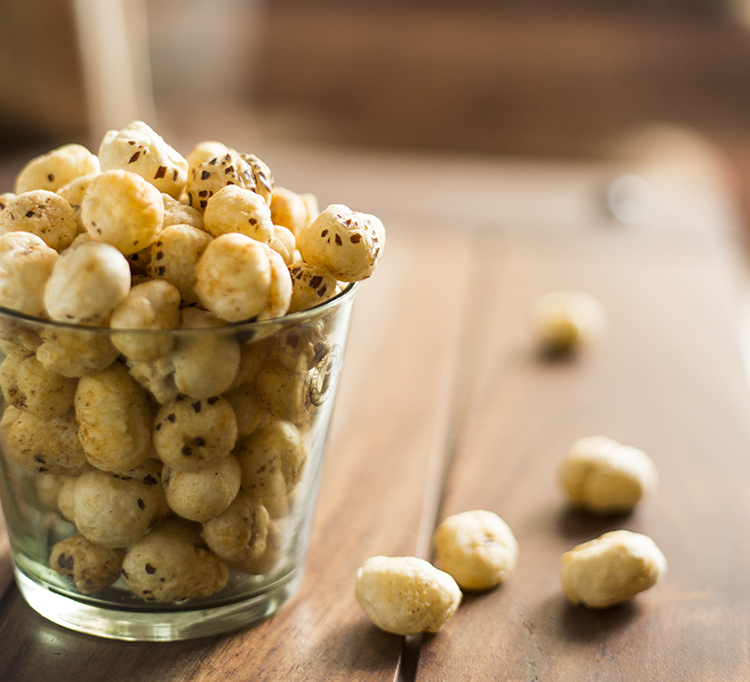
9 Easy Recipes with Makhana You’ll Love
Makhana, or fox nuts, is a versatile superfood that seamlessly blends into daily meals, snacks, and desserts. With its mild flavor and satisfying crunch, makhana is delicious and a treasure trove of nutrients and health benefits. Whether you’re craving something savory or sweet, this ingredient has you covered.
Did you know?
Bihar, India, is the global powerhouse of makhana production, contributing to nearly 90% of the world’s supply. The northern districts of Bihar—including Madhubani, Darbhanga, Sitamarhi, Saharsa, Katihar, Purnia, Supaul, Kishanganj, and Araria—are especially suited for cultivating this aquatic crop. Bihar’s expertise in makhana farming stems from a rich legacy of traditional techniques, coupled with favorable climatic and soil conditions.
Here are 9 popular makhana recipes that are easy to prepare and delightful to savor:
1. Makhana Roasted Snack
A guilt-free, crunchy treat that’s perfect for mid-day hunger pangs.
Ingredients:
- 1 cup makhana
- 1 tbsp ghee (clarified butter)
- ½ tsp salt
- ½ tsp black pepper
- ½ tsp red chili powder (optional)
- ½ tsp roasted cumin powder
Instructions:
- Heat ghee in a pan over medium heat.
- Add makhana and roast for 5-7 minutes, stirring continuously until crispy.
- Sprinkle salt, black pepper, red chili powder, and cumin powder.
- Toss well to coat the makhana evenly with the spices.
- Let cool and enjoy this healthy snack.
2. Makhana Kheer (Fox Nut Pudding)
A creamy, indulgent dessert that’s a crowd-pleaser.
Ingredients:
- 1 cup makhana
- 1 liter full cream milk
- ¼ cup sugar
- ¼ tsp cardamom powder
- 2 tbsp chopped nuts (cashews, almonds, pistachios)
Instructions:
- Roast makhana in a pan until crispy and set aside.
- In a heavy-bottomed pan, bring milk to a boil.
- Add the roasted makhana and simmer for 10-15 minutes.
- Stir in sugar and cardamom powder.
- Garnish with chopped nuts and serve warm or chilled.
3. Makhana Munch (Spicy Fox Nut Snack)
For those who love a spicy kick in their snacks.
Ingredients:
- 1 cup makhana
- 1 tbsp oil
- ¼ tsp turmeric powder
- ½ tsp chaat masala
- ½ tsp red chili powder
- Salt to taste
Instructions:
- Heat oil in a pan and add makhana.
- Roast for 5-7 minutes until crisp.
- Add turmeric, chaat masala, red chili powder, and salt.
- Mix well and allow to cool before enjoying.
4. Makhana and Pea Curry
A wholesome curry that pairs perfectly with roti or rice.
Ingredients:
- 1 cup makhana
- 1 cup boiled peas
- 1 onion, finely chopped
- 1 tomato, chopped
- 1 tsp ginger-garlic paste
- ½ tsp turmeric powder
- 1 tsp garam masala
- ½ tsp cumin seeds
- Salt to taste
- Fresh coriander leaves for garnish
Instructions:
- Heat oil in a pan and add cumin seeds. Let them splutter.
- Add onions and sauté until golden brown.
- Stir in ginger-garlic paste and tomatoes, cooking for 5 minutes.
- Add turmeric, garam masala, and salt. Mix well.
- Combine boiled peas and roasted makhana, stirring to blend flavors.
- Garnish with coriander leaves and serve hot.
5. Makhana Chaat
A refreshing, tangy snack perfect for evenings.
Ingredients:
- 1 cup makhana
- ½ cup boiled potatoes, mashed
- ¼ cup yogurt
- 1 tbsp tamarind chutney
- 1 tbsp green chutney
- ½ tsp chaat masala
- ½ tsp roasted cumin powder
- Fresh coriander leaves for garnish
Instructions:
- Roast makhana until crispy.
- In a bowl, mix potatoes, yogurt, tamarind chutney, green chutney, chaat masala, and cumin powder.
- Add roasted makhana and toss gently.
- Garnish with coriander and serve chilled.
6. Makhana Pulao
A flavorful rice dish infused with the goodness of makhana.
Ingredients:
- 1 cup makhana
- 1 cup basmati rice
- 1 onion, sliced
- 1 tomato, chopped
- ½ cup peas (optional)
- 1 tsp cumin seeds
- ½ tsp turmeric powder
- 1 tsp garam masala
- Salt to taste
- Fresh coriander for garnish
Instructions:
- Cook rice and set aside.
- Heat oil in a pan and add cumin seeds.
- Sauté onions until golden brown, then add tomatoes, peas, and spices.
- Add roasted makhana and cooked rice. Mix well.
- Garnish with coriander and serve.
7. Makhana Soup
A warm, nourishing bowl of comfort.
Ingredients:
- 1 cup makhana
- 1 onion, chopped
- 1 carrot, chopped
- ½ cup spinach leaves
- ½ tsp cumin seeds
- 1 tsp ginger-garlic paste
- Salt and pepper to taste
Instructions:
- Roast makhana and grind into a coarse powder.
- Heat oil in a pot and add cumin seeds.
- Sauté onions, carrots, and spinach for 5 minutes.
- Add water and bring to a boil.
- Stir in makhana powder and cook for 10 minutes.
- Blend if desired and serve hot.
8. Makhana and Coconut Ladoo
A sweet treat with a hint of tropical flavor.
Ingredients:
- 1 cup makhana
- ½ cup grated coconut
- ¼ cup sugar
- 1 tbsp ghee
- ¼ tsp cardamom powder
Instructions:
- Roast makhana and grind into a powder.
- Heat ghee in a pan and sauté grated coconut.
- Add makhana powder, sugar, and cardamom. Mix well.
- Shape into small ladoos and let cool before serving.
9. Makhana Stir-Fry
A quick, healthy veggie-loaded dish.
Ingredients:
- 1 cup makhana
- ½ cup mixed vegetables (carrots, peas, beans)
- 1 onion, chopped
- ½ tsp mustard seeds
- ½ tsp turmeric powder
- Salt and pepper to taste
Instructions:
- Roast makhana until crispy.
- Heat oil in a pan and add mustard seeds. Once they splutter, sauté onions.
- Add mixed vegetables, turmeric, salt, and pepper. Cook for a few minutes.
- Toss in roasted makhana and mix well.
- Serve hot.

How Bihar Became the Largest Exporter of Fox Nuts
Bihar has been the epicenter of makhana cultivation for centuries, primarily due to its favorable climatic conditions and water bodies. The nutrient-rich soil and abundance of ponds, particularly in the northern districts like Madhubani, Darbhanga, and Saharsa, provide the ideal environment for makhana farming.
- Traditional Knowledge: Farmers in Bihar have passed down the knowledge of makhana farming across generations. The cultivation involves labor-intensive techniques, including water-based harvesting and meticulous drying processes, which have been perfected over time.
- Government Support: In recent years, the Indian government and the Bihar state government have supported makhana farming through subsidies and training programs, encouraging farmers to embrace modern techniques while preserving traditional methods.
- Global Demand: With an increasing focus on health-conscious diets globally, makhana has found a strong export market. It is highly sought after in countries like the USA, UK, and Australia as a healthy snack alternative. Bihar currently contributes nearly 90% of the world’s makhana supply, cementing its position as the global leader.
Health Benefits of Makhana (Fox Nuts)
Makhana is not just a tasty snack; it’s a powerhouse of nutrition. Here are some of its key benefits:
- Rich in Antioxidants: Makhana contains flavonoids and other antioxidants that help neutralize free radicals, reducing oxidative stress and slowing the aging process.
- Promotes Heart Health: Low in sodium and high in potassium, makhana helps regulate blood pressure and maintain cardiovascular health.
- Good for Digestion: Its high fiber content aids digestion and prevents constipation, making it an ideal snack for all age groups.
- Supports Weight Loss: Makhana is low in calories and rich in protein, which helps curb hunger and promote weight loss.
- Controls Blood Sugar Levels: The low glycemic index of makhana makes it a great snack for individuals managing diabetes.
- Boosts Kidney Health: Makhana is believed to have a detoxifying effect, helping maintain kidney health and flushing out toxins.
- Improves Skin Health: Rich in antioxidants and anti-aging properties, makhana can improve skin texture and reduce wrinkles.
- Strengthens Bones: Packed with calcium, makhana supports bone health and is particularly beneficial for older adults.
Conclusion
These 9 makhana recipes showcase the incredible versatility of this superfood. Beyond its culinary appeal, makhana stands out as a nutritional powerhouse with numerous health benefits, from improving digestion to supporting heart health. As Bihar continues to dominate global makhana production, let’s celebrate this humble yet extraordinary ingredient by incorporating it into our daily diets. Try these recipes and discover the endless possibilities that makhana brings to your table.
-

7 benefits of Makhana
7 Benefits of Makhana You Probably Didn’t Know
Makhana, commonly referred to as fox nuts or lotus seeds, is a time-honored ingredient in Indian households, celebrated for its nutritional value and versatility. While many recognize it as a healthy, low-calorie snack, makhana’s potential extends far beyond merely curbing hunger pangs.It has some really benefical effects on the skin and let’s explore the seven incredible benefits of makhana in detail.
1. Rich in Antioxidants: Fighting Free Radicals
Antioxidants fight free radicals, a major cause of aging and cellular damage. Free radicals also contribute to chronic illness. Makahana is rich in antioxidants like flavonoids and polyphenols. These compounds are known to boost the immune system by combating oxidative stress.
How Antioxidants Work
Free radicals are byproducts of metabolism or exposure to environmental stressors such as UV radiation, pollution, and toxins. Left unchecked, these molecules can damage proteins, DNA, and cell membranes.
Antioxidants in makhana donate electrons to free radicals, stabilizing them and preventing cellular harm.
Antioxidants and Skin Health
- Anti-Aging: By reducing oxidative stress, antioxidants help delay the onset of wrinkles, sagging, and fine lines.
- Skin Repair: Antioxidants enhance the repair of damaged skin cells, promoting a clearer complexion.
- Sun Protection: While not a substitute for sunscreen, the antioxidants in makhana may help mitigate sun-induced damage.
Regular consumption of makhana can also enhance energy levels, reduce fatigue, and contribute to healthier hair and nails.
2. Boosts Collagen Production for Firm Skin
Collagen is the most abundant protein in the human body, accounting for 70-80% of skin composition. It is responsible for maintaining skin elasticity and firmness, but collagen production naturally declines with age. Makhana contains key amino acids, such as glutamine and proline, which are pivotal for collagen synthesis.
Benefits of Collagen-Boosting Nutrients in Makhana
- Improved Elasticity: Amino acids in makhana promote firmer, more elastic skin.
- Faster Healing: Collagen aids in skin repair, making it beneficial for wound healing and scar reduction.
- Reduced Wrinkles: Enhanced collagen production minimizes the appearance of fine lines and wrinkles.
Pro Tips for Skin Health
Pair makhana with foods rich in vitamin C (such as oranges or bell peppers) to optimize collagen synthesis. Vitamin C acts as a co-factor, improving the body’s ability to produce and utilize collagen.
3. Anti-inflammatory Properties: Reducing Inflammation
Inflammation is both a friend and foe; while it’s the body’s natural defense mechanism, chronic inflammation can lead to various skin issues, including acne, rosacea, and eczema. The anti-inflammatory compounds in makhana, such as kaempferol, help modulate the body’s inflammatory response.
How Makhana Fights Inflammation
- Reduction of Cytokines: Cytokines are signaling proteins that mediate inflammation. Makhana’s bioactive compounds reduce their production.
- Improved Skin Barrier: By calming irritated skin, makhana helps restore the skin’s natural barrier, preventing moisture loss and environmental damage.
- Acne Management: Anti-inflammatory properties reduce redness, swelling, and pain associated with acne lesions.
Incorporating makhana into your daily diet can also benefit joints, as it helps alleviate inflammation-related conditions like arthritis.
4. Supports Digestive Health: Natural Detox
Gut health and skin health are deeply interconnected—a concept often referred to as the gut-skin axis. Makhana is a rich source of dietary fiber, which plays a pivotal role in maintaining digestive health.
Benefits of Makhana for Digestion
- Improved Bowel Regularity: The fiber in makhana prevents constipation, ensuring toxins are efficiently eliminated.
- Prebiotic Properties: Makhana contains compounds that feed beneficial gut bacteria, supporting a balanced microbiome.
- Reduced Bloating: Its light, easily digestible nature prevents bloating, ensuring comfort after meals.
Skin Benefits of a Healthy Gut
- Clearer Complexion: A well-functioning gut reduces the likelihood of toxin buildup, which can manifest as skin problems like acne.
- Enhanced Radiance: Nutrient absorption improves when digestion is optimal, leading to a glowing complexion.
To maximize its detoxifying benefits, combine makhana with hydrating drinks such as coconut water or herbal teas.
5. Hydrates the Skin: A Natural Moisturizer
Hydration is fundamental to maintaining youthful, supple skin. While topical moisturizers provide surface-level hydration, dietary sources like makhana nourish the skin from within. Makhana contains amino acids that enhance the skin’s ability to retain moisture.
Key Hydration Benefits
- Combatting Dryness: Makhana improves the skin’s natural hydration levels, reducing flakiness and rough patches.
- Plumping Effect: Well-hydrated skin appears fuller and more youthful.
- Enhanced Absorption: Proper hydration improves the efficacy of topical skincare products, as hydrated skin absorbs nutrients better.
For an added boost, consider making a hydrating makhana face mask by blending roasted makhana with honey and yogurt.
6. Regulates Blood Sugar: Aiding in Skin Health
Spikes in blood sugar levels can trigger a process called glycation, wherein sugar molecules bind to collagen and elastin, causing them to become stiff and brittle. This contributes to premature aging and exacerbates inflammatory skin conditions. Makhana’s low glycemic index ensures gradual release of sugar, preventing such spikes.
Skin Benefits of Stable Blood Sugar
- Reduced Acne: Stable blood sugar minimizes inflammation and sebum production, reducing acne flare-ups.
- Preservation of Collagen: Preventing glycation protects collagen, maintaining skin elasticity.
- Even Skin Tone: Blood sugar regulation reduces hyperpigmentation and redness caused by inflammatory responses.
7. Promotes Overall Skin Health: Rich in Essential Nutrients
Makhana’s nutrient density makes it a superfood for skin health. It is packed with magnesium, potassium, and iron, among other vitamins and minerals.
Role of Key Nutrients
- Magnesium: Enhances skin cell regeneration and reduces stress-induced breakouts.
- Potassium: Maintains the skin’s moisture balance, preventing dryness.
- Iron: Improves blood circulation, ensuring skin cells receive adequate oxygen and nutrients.
These nutrients also support overall health, boosting energy levels, improving sleep quality, and enhancing mental clarity—factors that indirectly influence skin health.
Creative Ways to Incorporate Makhana
As a Snack
- Roast makhana with olive oil, turmeric, and a pinch of black salt for a savory treat.
- Prepare a sweet version by tossing it in honey and cinnamon.
In Recipes
- Add makhana to soups for a crunchy texture.
- Grind it into a fine powder to use as a gluten-free flour alternative in desserts.
In Skincare
- Use ground makhana as a gentle exfoliator.
- Create DIY face masks by blending makhana with natural ingredients like aloe vera and rose water.
Conclusion
Makhana is much more than a guilt-free snack—it is a versatile superfood brimming with benefits for your skin, gut, and overall health. From its antioxidant prowess to its ability to hydrate and rejuvenate the skin, makhana deserves a place in your daily routine.
As you embrace makhana’s numerous benefits, remember to complement it with a balanced diet, proper hydration, and a consistent skincare regimen. This holistic approach will ensure that you reap the maximum rewards of this nutrient-packed superfood.
So, the next time you’re looking for a snack that satisfies both your taste buds and your health goals, reach for makhana and let its magic transform you from the inside out.
-

Bananas: An Effective Remedy for Anxiety Says Mom – Here’s the Science
Introduction
Sometimes, the simplest solutions come from age-old wisdom. Your mom might have told you, “Eat a banana; it’ll calm your nerves,” and as it turns out, she’s on to something. Bananas are not just a quick, healthy snack—they’re also packed with nutrients that may help reduce anxiety.
In this blog, we’ll explore how bananas can aid in managing anxiety, the science behind their calming effects, and how to incorporate this humble fruit into your daily diet to support mental well-being.
How Bananas Help with Anxiety
- Rich in Vitamin B6
Bananas are an excellent source of vitamin B6, which plays a key role in producing neurotransmitters like serotonin and dopamine. These “feel-good” chemicals regulate mood and promote relaxation, helping to combat anxiety. - Boosts Serotonin Naturally
While bananas don’t contain serotonin themselves, their high tryptophan content acts as a precursor for serotonin production in the brain. Serotonin helps regulate mood, reduce stress, and improve sleep quality—factors directly linked to anxiety relief. - Regulates Blood Sugar Levels
Anxiety can sometimes be exacerbated by blood sugar fluctuations. The natural sugars in bananas, combined with their fiber content, provide a steady energy release, preventing the spikes and crashes that might worsen anxiety symptoms. - High in Magnesium
Magnesium is a well-known mineral for calming the nervous system. A medium-sized banana contains around 32 mg of magnesium, which helps reduce stress and promote relaxation. Studies have linked low magnesium levels to increased anxiety, making bananas a great way to replenish this essential nutrient. - Packed with Potassium
Anxiety can elevate blood pressure and cause heart palpitations. Potassium in bananas helps regulate blood pressure and maintain a steady heartbeat, counteracting the physical symptoms of anxiety. - Acts as a Quick Energy Source
Fatigue and low energy can exacerbate feelings of anxiety. Bananas are a natural energy booster, providing quick yet sustained energy to help you stay alert and focused without triggering stress.
Ways to Incorporate Bananas Into Your Diet
- As a Snack: Simply peel and eat a banana when you feel stressed or anxious.
- In Smoothies: Blend a banana with almond milk, a handful of spinach, and a spoonful of peanut butter for a calming, nutrient-packed smoothie.
- With Oatmeal: Slice a banana over your morning oatmeal to start your day with a serotonin boost.
- As a Dessert: Freeze banana slices and blend them to create a creamy, sugar-free “nice cream.”
- With Nut Butter: Spread peanut or almond butter on a banana for a quick, anxiety-busting snack.
The Science-Backed Benefits
Numerous studies support the anxiety-relieving benefits of bananas:
- A 2021 review published in Nutrients highlights the role of tryptophan and vitamin B6 in enhancing serotonin synthesis, leading to mood improvement.
- Research in Magnesium Research found that individuals with anxiety often have low magnesium levels, and increasing magnesium intake can significantly reduce symptoms.
- A study in the Journal of Hypertension noted the effectiveness of potassium-rich foods like bananas in lowering stress-induced blood pressure spikes.
When Bananas Might Not Be Suitable
While bananas are a natural remedy for anxiety, they may not suit everyone:
- People with Diabetes: Due to their natural sugars, bananas should be consumed in moderation by individuals with diabetes.
- Allergies: Though rare, some people may be allergic to bananas and should avoid them.
- Gastrointestinal Issues: If you have irritable bowel syndrome (IBS) or sensitivity to certain fruits, bananas might trigger bloating or discomfort.
Conclusion
Bananas are more than just a convenient fruit—they’re a powerhouse of nutrients that support mental health and alleviate anxiety. Whether it’s their vitamin B6 boosting serotonin, their magnesium calming your nerves, or their potassium regulating your heart rate, bananas offer a simple, natural way to manage stress.
So, the next time anxiety strikes, take your mom’s advice, grab a banana, and let this nutrient-packed fruit work its magic. Sometimes, the best remedies come from nature—and our moms!
Similar resources.
- Banana fruit pulp and peel involved in antianxiety and antidepressant effects
- Bananas: Health Benefits and Nutritional Info Explained
- Benefits and health risks of bananas
- 9 foods that help reduce anxiety
- Bananas 101: Nutrition Facts and Health Benefits
- Health Benefits of Red Bananas
- 23 Most Nutritious, Healthy Fruits
- Rich in Vitamin B6

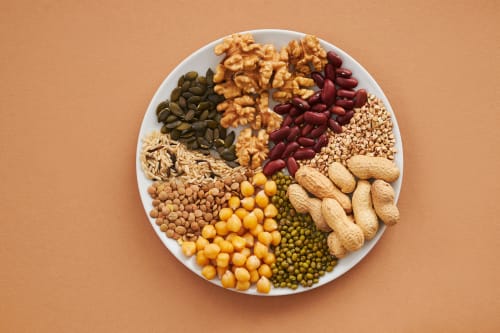





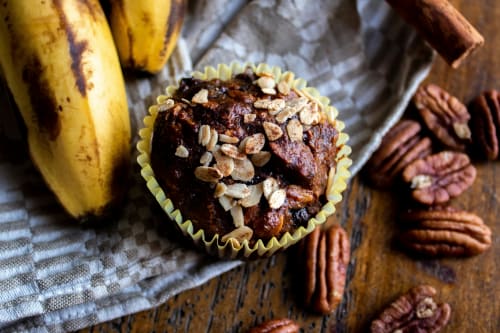


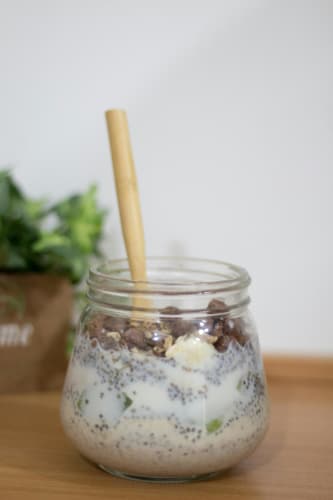
Leave a Reply to Period Bloating: 6 Natural Remedies to Feel Better | A Youth's Guide Cancel reply